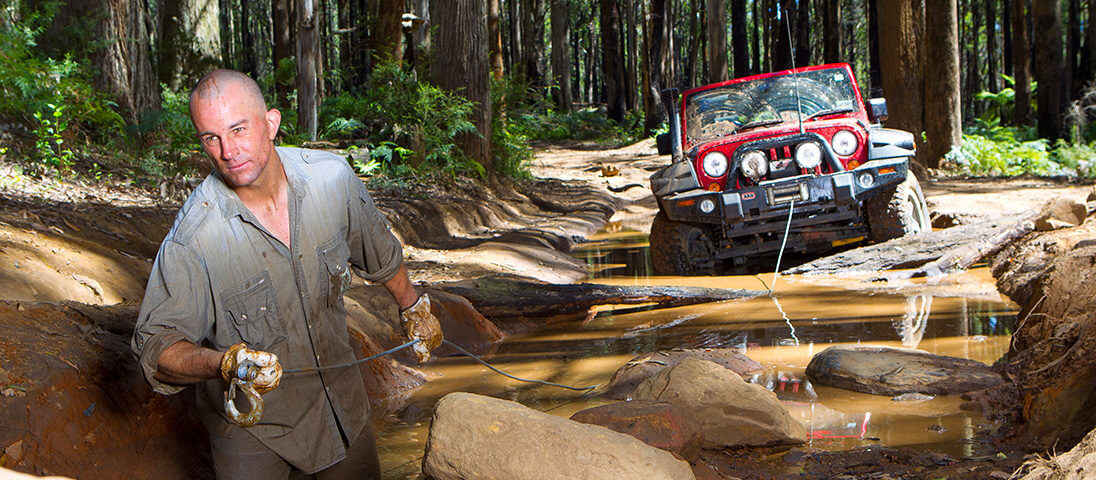Subscribe to ARB
Subscribe to ARB to receive your regular 4x4 CULTURE magazine, exclusive ARB promotional news and new product release information.
3rd September, 2012

Hi ARB,
I have conducted a number of 4×4 courses and have been off roading and camping with my family since I was shorter than a wheel arch. But, funnily enough, I still don’t have the foggiest idea about winch maintenance. I know the physics behind winch use and have plenty of practical experience under my belt. However, winch maintenance has just never been covered in the courses I’ve been trained on, and the family is full of mixed advice (who isn’t, right?).
I have heard from a trusted mate in a 4×4 club that, before use, I should unravel and then rewind my winch (it was factory fitted and is unused to date). Similarly, my brother says I should unravel it and grease it. Yet my father says ‘she’ll be right’ as it stands. Before I start anything with my new pride and joy, what maintenance should I conduct and how often? Or are there specialised mechanics for jobs like this?
I would value your professional advice and guidance.
Cheers,
– Scott
Hello Scott,
Winch maintenance, eh? At the risk of sounding like a politician, I’m very glad you asked that question. This is one area where the term ‘she’ll be right’ is definitely not appropriate.
Like lead acid batteries, the winches we see that are in the worst condition have been installed and simply never used. Their deterioration comes as quite a surprise to the uneducated user.
There are a lot of different types of winches. Warn manufactures a huge range from tiny ATV winches and the range for 4×4 vehicles, to commercial winches for tow trucks and the huge, fully plastic-dipped and submersible military winches. DC Electric Recreational Vehicle Recovery Winches are what we bolt onto the front of our 4×4 vehicles.
First and foremost, the wire rope on the drum of your new winch was installed in the factory to look neat and tidy but is not under any tension. If you go and start using the winch with wire rope in this initial state, unless you have all the rope out to the final layer of the drum, you will pull the top layer down through the other looser wraps and bind and damage the wire rope and create a set of kinks in it that are very hard to correct.
You need to unwind it somewhere where you can get most of the rope off down to the last five wraps around the drum. You then need to fasten the hook to a tree or another vehicle and either with your foot on the brake whilst another person operates the winch or with the handbrake on to create some resistance, power the rope in under this load, stopping occasionally to check that it is spooling neatly onto the drum.
This procedure is covered in your winch manual, but there is also another excellent publication available for download on Warn’s website called Warn’s Basic Guide to Winching.
All winches require regular care and maintenance, despite what some manuals tell you.
The worst thing anyone can do is not use or operate their winch until it’s needed. A winch is an electromechanical device that is effectively out in the weather all the time and subjected to water blasts from driving rain, car washes, mud holes and creek crossings. If you ever drive through floodwater, you can also expose the winch to horrible chemical mixtures that are sometimes present in the water.
A recreational vehicle recovery winch also gets hot when in use, and that means the air inside it expands until the internal space needs to be vented. This necessary venting can also let water in—and if not removed somehow, this water starts corrosion that can eventually hamper or stop the operation of the winch or jam its brake mechanism. So any time you expose your winch to water ingress in a creek crossing or car wash, you really need to operate the winch as soon as possible in order to get it sufficiently warm enough to dry out any moisture.
By doing this, you will prolong the life of the winch and reduce the need for any major maintenance for some years. It’s a good idea nonetheless to fully strip down and inspect the unit every three or four years and also when you’re preparing for any big trips or events.
Such a major service should include the following: wash, degrease, check the gears, regrease, check bearings/bushes where fitted, check motor coupling, replace gaskets where necessary, check armature for overheating and melting of protective coating, inspect brushes for wear, check brake operation, replace tie rods where worn, check drains are clear and inspect the rope for damage.
I’d also check the control box for dirt and debris that stops solenoids from earthing on the backing plate. Plus I’d check the nuts that hold cables for looseness and corrosion, check remote pins for damage and the plug for corrosion, and then I’d operate the winch once reassembled. Be sure to re-spool the rope under load.
You mentioned greasing the wire rope. This is something done in the construction industry with cranes. We do not recommend it. It is a good way to get a very dirty and grotty winch rope with lots of abrasive materials stuck to it.
Thanks again for your question. Hopefully you and other readers will all have benefitted in some way from the answer.
– Greg Milton, Manager
National Products & Services
Subscribe to ARB to receive your regular 4x4 CULTURE magazine, exclusive ARB promotional news and new product release information.